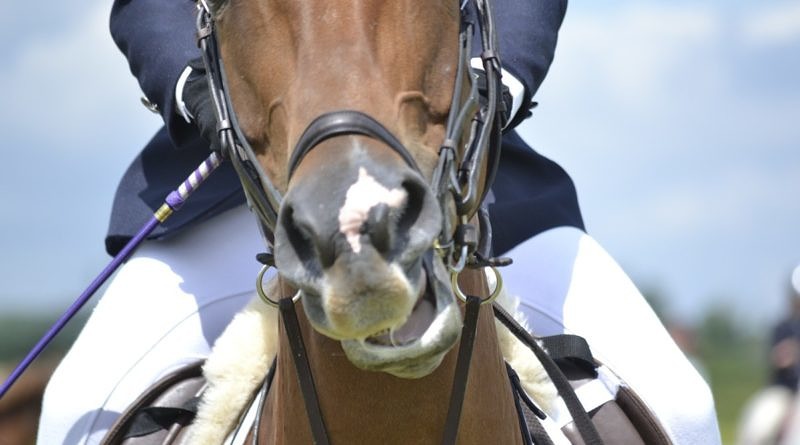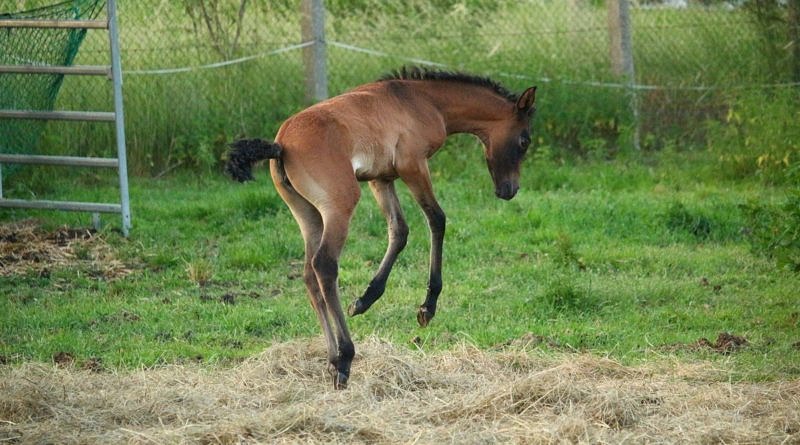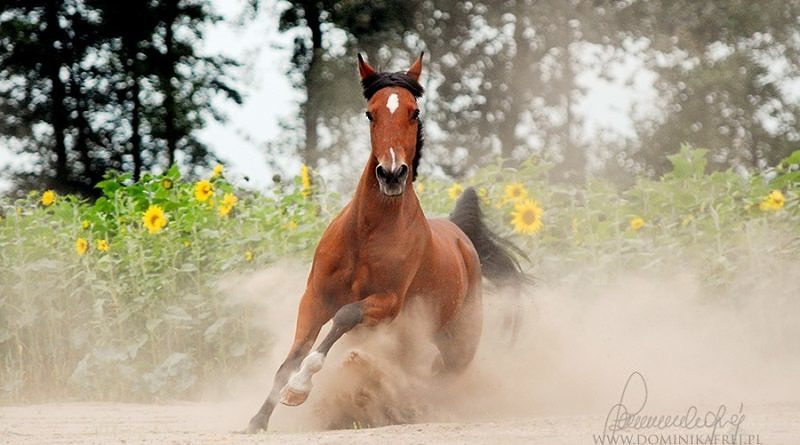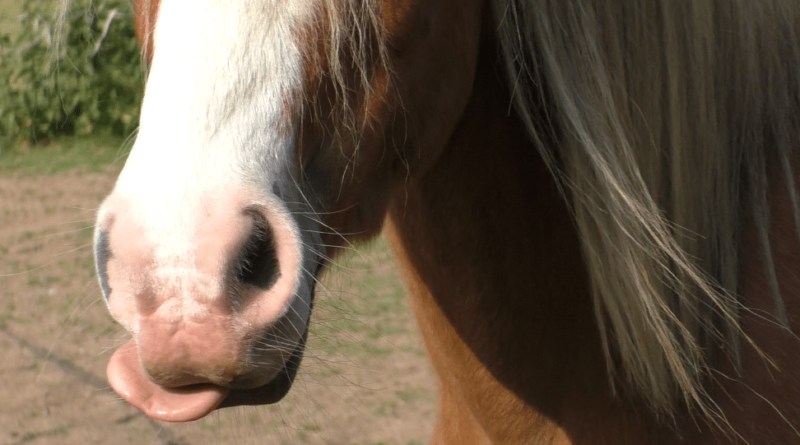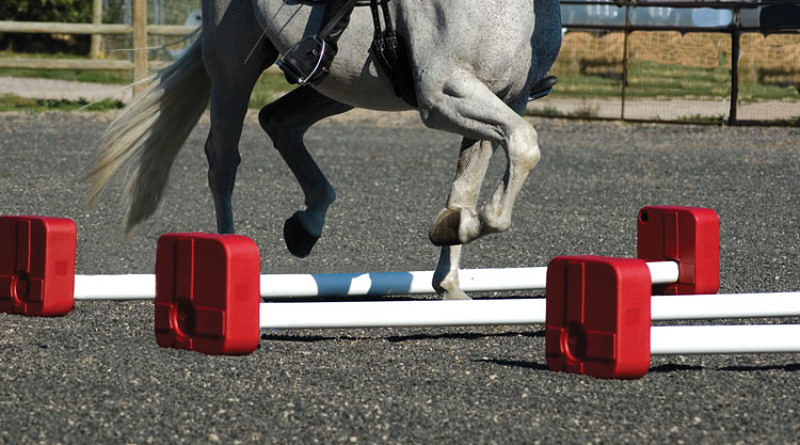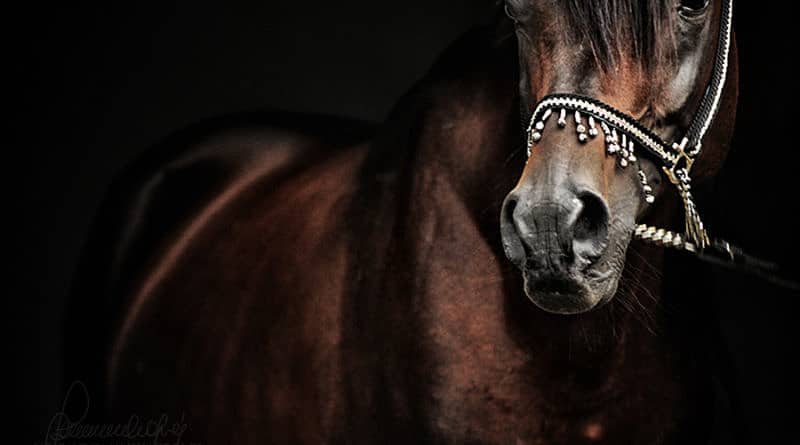Why excitement is probably not why your horse is strong under saddle
Like most animals, horses prefer to conserve their energy for those moments when their survival really depends on it. So why do some horses get “strong”?
Picture your horse in their paddock for a moment.
What are they doing?
Was your answer ‘grazing’?
Horses in the wild will spend around 16 hours a day eating. This is by far their most significant pastime. The rest of their day is spent sleeping, relaxing and interacting with other horses. Horses keep fit by wandering large distances as they graze and research shows that horses with ample turnout can replicate this to great effect. Bouts of high-energy activity are limited to play (primarily between younger individuals), brief agonistic encounters such as stallion fights and of course the occasional spook.
When we ask horses to perform sustained high-energy activities like ridden work – whether an hour’s lesson or a show jumping course – we are asking them to do something that is out of the ordinary from an evolutionary perspective. Like most animals, horses are inherently ‘lazy’ and prefer to conserve their energy for those moments when their survival really depends on it. In the wild, expending your energy running around for ‘fun’ is a really bad idea because when a predator does come along, you might have already run out of steam! It’s therefore really important that your body feels ‘lazy’ and ‘hungry’ so you eat lots and rest lots so that when a predator does come along and your life depends on it, you can really get going and get gone!
Domestic horses retain these adaptations despite now living in an environment where food is abundant and predation virtually non-existent. So while it may be good for a horse to get regular exercise in a domestic setting, this doesn’t mean they wouldn’t prefer to just stand around and get fat! The same applies to humans – like horses, we have evolved to want to conserve our energy which is why we tend to eat more than we should and do less exercise than we should to stay healthy. We experience this adaptation as ‘hunger’ and ‘laziness’ but these feelings are simply how our body ensures we do the right things to keep us alive in the context that we evolved in, which is quite far removed from the comfortable lives we now live. This doesn’t mean we can’t enjoy exercise and physical activity of course – but the vast majority of us don’t choose to engage in a lot of it. We must always remember that how good something is for us in our modern context doesn’t necessarily align with how we feel about it!
With this in mind, we would expect horses that behave calmly when left to their own devices to be the same laid back lazy creatures under saddle. So why is it that some horses appear to become so forward at the sight of a cross pole or speed up the moment you pick up the reins when they wouldn’t even blink at a jump when turned out?
A lot of people will interpret these types of behaviours as ‘excitement’ or will simply say that their horse is ‘strong’ without trying to explain why. In reality, while some horses may well be exceptions, in the majority of cases these behaviours represent anxiety, discomfort and even fear. When a horse is unhappy about something, their first instinct is to run – the ‘flight’ response.
Now many will point out that horses that display these sorts of behaviours aren’t necessarily running away from anything. When a horse rushes at a jump, they are clearly running towards it – not away. And when a horse is ‘strong’ and pulls at the bit, they are certainly failing to evade pressure. However, what needs to be understood is that the flight response is not a thought-through reaction. The instinct is simply to run. The horse is not consciously deciding to run away or to fight the rider – they are just instantaneously reacting to something that is causing them stress. Over time, this can form a habit or become a more conscious learnt form of evasion. But irrespective of the outcome, the origin is simply this knee-jerk instinctual reaction.
In fact, most horse owners are aware of this, if only subconsciously. If you saw your horse running around erratically in the paddock for a sustained period, you would in most cases immediately identify the behaviour as an anxious one and try to identify a cause. For instance, you may know your horse’s pasture-mate is being led away and that your horse is displaying symptoms of separation anxiety. Or you might look for what spooked your horse and caused it to panic. So why not apply this same intuition under saddle?
At first, accepting this may feel uncomfortable. We all love our horses and want to do well by them. We don’t want to feel that something we enjoy so much is causing our equine partner distress. We would much rather think that our horses are full of joy at the thought of jumping and cannot contain their excitement, or are just naturally ‘forward-going’. To think that the animal we are supposed to be working with is actually quite stressed by being under saddle is not a pleasant realisation.
And of course this won’t always be the case as there are other potential reasons for this type of behaviour as well. However, once we accept this as a likely primary cause for our difficulties, it becomes a lot easier to address them with an open mind. And in time, we can truly have a horse that does enjoy what she or he is being asked to do, is motivated positively to do it and is relaxed (or at least as relaxed as possible) while doing it.
Most horses in their normal state are lazy animals that mooch about, chew noisy mouthfuls of grass and preferably settle their disputes with a flick of the ears and swish of the tail. So if we truly want to have a partner to work with who enjoys their time with us, we need to begin by addressing the underlying mental state that causes our horse to behave so out of character when we are on their back and try to nurture a more relaxed way of being with and working with each other. Only then can we really work as partners to achieve our goals together.

